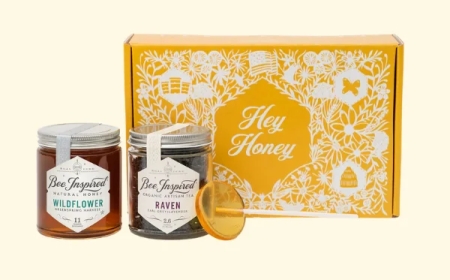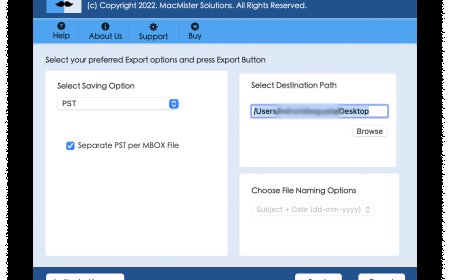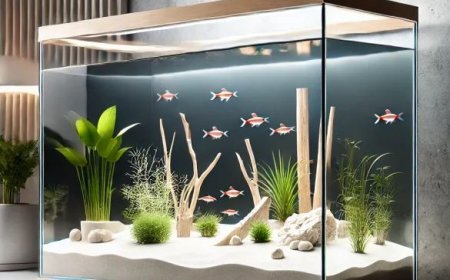How to Pick Spring Waters
How to Pick Spring Waters Choosing the right spring water is more than a matter of personal preference—it’s a decision that impacts your health, environmental footprint, and overall quality of life. With an explosion of bottled water brands and increasing consumer awareness around hydration and sustainability, understanding how to pick spring waters has never been more critical. Unlike purified or
How to Pick Spring Waters
Choosing the right spring water is more than a matter of personal preference—it’s a decision that impacts your health, environmental footprint, and overall quality of life. With an explosion of bottled water brands and increasing consumer awareness around hydration and sustainability, understanding how to pick spring waters has never been more critical. Unlike purified or tap water, spring water originates from natural underground sources, flowing to the surface without mechanical intervention. This natural filtration process often results in a unique mineral profile, distinct taste, and perceived purity that many consumers seek. However, not all spring waters are created equal. Misleading labels, unclear sourcing, and unsubstantiated health claims can confuse even the most informed buyers. This guide provides a comprehensive, step-by-step approach to help you confidently select spring water that aligns with your health goals, ethical values, and taste preferences. Whether you’re purchasing for daily hydration, outdoor activities, or special occasions, this tutorial equips you with the knowledge to make smarter, more intentional choices.
Step-by-Step Guide
Understand What Makes Water “Spring”
To pick the right spring water, you must first understand what qualifies as true spring water. According to the U.S. Food and Drug Administration (FDA), spring water must originate from an underground formation from which water flows naturally to the Earth’s surface. It cannot be pumped using artificial pressure unless it’s collected at the point where it emerges or via a borehole tapping the underground formation feeding the spring. This distinction is crucial because many products labeled as “spring water” are actually filtered tap water or groundwater extracted via wells, not naturally flowing springs.
Look for clear labeling that specifies “100% Natural Spring Water” or “Source: Natural Spring.” Avoid vague terms like “purified water” or “artesian water,” which are not synonymous with spring water. Artesian water comes from a confined aquifer under pressure, while purified water may have been treated through reverse osmosis, distillation, or deionization—processes that remove naturally occurring minerals. True spring water retains its mineral content because it’s naturally filtered through layers of rock and soil.
Verify the Source Location
The origin of spring water significantly influences its mineral composition and taste. Different geological regions produce water with varying levels of calcium, magnesium, sodium, potassium, silica, and other trace elements. For example, spring water from the Rocky Mountains may be high in calcium due to limestone bedrock, while water from volcanic regions like Hawaii may contain higher concentrations of silica and sulfur compounds.
Reputable brands will disclose the exact location of their spring source on the label or website—often with maps or GPS coordinates. Look for details such as “Spring sourced from the Blue Ridge Mountains, North Carolina” or “Harvested at 1,800 feet above sea level in the Cascade Range.” If the source is not clearly identified, proceed with caution. Brands that hide their source may be using municipal water or multiple undisclosed sources, which compromises transparency and consistency.
Use independent databases like the Spring Water Database or the International Bottled Water Association (IBWA) member directory to cross-check claimed sources. Many certified brands are required to submit annual water quality reports, which are publicly accessible.
Examine the Mineral Profile
Spring water contains naturally occurring minerals that contribute to its flavor and potential health benefits. While there’s no “ideal” mineral profile for everyone, understanding what’s in your water helps you match it to your dietary needs.
Key minerals to consider:
- Calcium: Supports bone health and muscle function. Levels above 50 mg/L are considered high.
- Magnesium: Aids nerve function and reduces muscle cramps. Optimal levels range from 10–50 mg/L.
- Sodium: Important for electrolyte balance, but excessive amounts may be problematic for those on low-sodium diets. Look for under 20 mg/L if you’re sensitive.
- Potassium: Helps regulate blood pressure. Typically low in spring water (under 5 mg/L), but beneficial when present.
- Bicarbonate: Contributes to alkalinity and may aid digestion. Waters with over 200 mg/L are considered alkaline.
Most reputable brands list their mineral content on the label or website. If not, contact the company directly for a water quality report. Avoid products that list “no additives” but fail to disclose natural mineral content—this could indicate incomplete transparency.
Taste Test for Personal Preference
While mineral content affects health, taste is equally important. Spring water can range from crisp and clean to slightly earthy or metallic, depending on its geological origin. The best way to determine your preference is through direct tasting.
Conduct a blind taste test with three to five different spring waters. Pour each into identical glasses, label them with numbers, and sample them in order. Pay attention to:
- First impression: Is it light and refreshing, or heavy and dense?
- Aftertaste: Does it leave a clean finish, or a lingering metallic, salty, or chalky sensation?
- Texture: Does it feel soft on the tongue, or slightly gritty?
Many people prefer water with moderate mineral content—enough to add flavor without overpowering. Extremely low-mineral waters may taste flat, while high-mineral waters can be too intense for daily consumption. Consider your palate: if you enjoy sparkling water, you may prefer spring water with natural effervescence or higher bicarbonate levels.
Check for Certifications and Standards
Not all bottled water is regulated equally. In the United States, the FDA regulates bottled water as a food product, requiring it to meet standards for contaminants, labeling, and good manufacturing practices. However, third-party certifications add an extra layer of assurance.
Look for these trusted certifications:
- NSF International: Verifies that water meets NSF/ANSI 53 and 58 standards for contaminant reduction and quality.
- IBWA (International Bottled Water Association): Requires members to follow stricter standards than the FDA, including annual third-party audits.
- UL Verified: Certifies that the water source and production process meet specific purity and safety benchmarks.
- Organic Certification (rare): While water itself cannot be organic, some brands certify their packaging and sourcing methods as sustainable and chemical-free.
These certifications are often displayed on the bottle or website. If you don’t see them, ask for proof. A brand that invests in third-party verification is more likely to prioritize quality and transparency.
Assess Packaging and Sustainability
Choosing spring water isn’t just about what’s inside the bottle—it’s about the environmental impact of how it’s delivered. Plastic bottles contribute significantly to global waste, with over 60 million plastic bottles ending up in landfills daily in the U.S. alone.
When evaluating packaging, consider:
- Material: Opt for bottles made from 100% recycled PET (rPET) or glass. Glass is inert, recyclable, and preserves flavor better over time.
- Size: Larger formats (1-gallon jugs or multi-pack cases) reduce packaging waste per ounce of water.
- Recycling program: Some brands offer return-and-reuse programs or partner with recycling initiatives. Look for “Return for Refill” or “Closed-Loop Packaging” labels.
- Carbon footprint: Brands that source locally and use electric delivery fleets have a smaller environmental impact than those shipping across continents.
Consider alternatives like refillable water dispensers with spring water delivery or home filtration systems that mimic spring water mineral profiles. These options reduce single-use plastic and often cost less over time.
Compare Price Per Ounce
Spring water prices vary dramatically—from $1 per bottle to over $10 for premium or limited-edition sources. Price doesn’t always reflect quality, but it can indicate sourcing effort, packaging, and distribution costs.
To compare fairly, calculate the cost per ounce:
- 16.9 oz bottle at $2.00 = $0.118 per oz
- 1-gallon (128 oz) jug at $8.00 = $0.0625 per oz
- 5-gallon refill at $15 = $0.023 per oz
Buying in bulk or subscribing to a delivery service often results in significant savings. Premium spring waters may justify higher prices if they come from protected, remote sources with limited yield and rigorous quality controls. However, if two brands have similar mineral profiles and certifications but differ greatly in price, the more expensive one may be paying for branding rather than quality.
Read Customer Reviews and Independent Testing
Consumer feedback and third-party lab tests provide real-world insights beyond marketing claims. Look for reviews on trusted platforms like Consumer Reports, Wirecutter, or even Amazon (filtering for verified purchases). Pay attention to recurring themes: complaints about taste, odor, or aftertaste may signal contamination or poor storage.
Independent testing organizations like the Environmental Working Group (EWG) and Water Quality Association (WQA) periodically publish analyses of bottled water brands. Their reports often reveal undisclosed contaminants, misleading labels, or discrepancies between advertised and actual mineral content. For example, a 2022 EWG study found that some “spring water” brands contained trace levels of PFAS (forever chemicals) not listed on labels.
Don’t rely solely on brand websites. Cross-reference with neutral, science-based sources to validate claims.
Best Practices
Store Spring Water Properly
Even the purest spring water can be compromised by improper storage. Keep unopened bottles in a cool, dark place away from direct sunlight, heat sources, and strong odors. Plastic containers can leach chemicals when exposed to high temperatures, and sunlight can promote microbial growth in rare cases.
Once opened, consume spring water within 3–5 days if stored in the refrigerator. Use a clean, sealed container to prevent contamination. Avoid leaving bottles in hot cars or garages—this can degrade the plastic and alter the taste.
Rotate Your Selection
Drinking the same spring water every day may limit your exposure to a variety of beneficial minerals. Rotating between two or three different sources with distinct mineral profiles can provide a more balanced intake. For example, alternate between a calcium-rich spring from the Alps and a magnesium-dominant spring from the Pacific Northwest.
This practice also reduces the risk of overexposure to any single element, such as sodium or fluoride, which may accumulate over time if consumed in excess.
Avoid “Enhanced” or “Flavored” Spring Waters
Many brands now market “flavored spring water” with added vitamins, sweeteners, or electrolytes. While these may seem convenient, they often contain artificial ingredients, preservatives, or sugar alcohols that negate the purity of natural spring water.
If you want flavor, add fresh citrus slices, mint, or cucumber to plain spring water. This preserves the integrity of the water while enhancing taste naturally.
Test Your Home Water First
Before investing in bottled spring water, test your tap water. Many municipal systems provide annual water quality reports online. If your tap water is clean, low in contaminants, and has a pleasant taste, you may not need bottled spring water at all.
Consider installing a carbon or ceramic filter to improve taste and remove chlorine. These systems can mimic the mineral balance of spring water without the environmental cost of bottling and shipping.
Support Ethical and Local Producers
Choose brands that prioritize environmental stewardship and community impact. Look for companies that:
- Protect their water sources from over-extraction
- Reinvest profits into watershed conservation
- Employ local workers and source packaging regionally
- Participate in reforestation or clean-up initiatives
Smaller, family-owned spring water operations often have deeper ties to their environment and are more transparent about their practices than multinational corporations.
Be Skeptical of Health Claims
Many brands claim their spring water “boosts immunity,” “detoxifies the body,” or “balances pH.” These claims are not scientifically validated by major health organizations. Your kidneys and liver naturally regulate pH and eliminate toxins—no water can override this biological process.
Focus on hydration and mineral content, not marketing buzzwords. The healthiest spring water is simply clean, naturally sourced, and free of additives.
Tools and Resources
Recommended Apps and Websites
- EWG’s Tap Water Database: (ewg.org/tapwater) – Enter your zip code to see what’s in your local tap water and compare it to bottled brands.
- Spring Water Database: (springwaterdatabase.com) – A crowdsourced directory of verified spring sources worldwide with user-submitted photos and tasting notes.
- IBWA Member Directory: (bottledwater.org) – Lists certified bottled water producers that adhere to strict quality standards.
- Water Quality Association (WQA): (wqa.org) – Offers product certifications and educational resources on water treatment and safety.
- Think Dirty App: – Scan product barcodes to check for harmful additives or misleading labeling.
Essential Testing Kits
If you’re unsure about your local water quality or want to verify a bottled brand’s claims, use a home water testing kit:
- Health Metric HD1000: Tests for 12 parameters including heavy metals, nitrates, pH, and hardness.
- SimpleWater Tap Score: Mail-in kit with detailed lab analysis and personalized recommendations.
- WaterCheck Deluxe: Comprehensive test for over 50 contaminants, including PFAS and pharmaceutical residues.
These kits cost between $50–$150 and are invaluable for making informed decisions.
Recommended Books
- “The Water Diet” by Dr. Barry Sears – Explores the role of hydration and mineral balance in metabolism and health.
- “Bottled and Sold: The Story Behind Our Obsession with Bottled Water” by Peter Gleick – A deep dive into the environmental and economic impact of the bottled water industry.
- “Hydration: The Science of Water and Health” by Dr. Susan B. Roberts – Evidence-based insights into water’s role in human physiology.
DIY Spring Water Tasting Kit
Create your own tasting experience at home:
- Gather 5–7 unopened bottles of different spring waters.
- Store them at room temperature for 24 hours to allow gases to stabilize.
- Use clear, identical glasses and pour equal amounts.
- Use a palate cleanser (like a slice of apple or unsalted cracker) between samples.
- Take notes on aroma, texture, aftertaste, and overall preference.
- Revisit your notes after a week to see if your preferences change.
This method trains your palate and helps you identify the mineral characteristics you truly enjoy.
Real Examples
Example 1: Fiji Water – Premium Source, Controversial Impact
Fiji Water markets itself as “untouched by man” and sourced from an artesian aquifer in the Fiji Islands. Its mineral profile includes calcium (18 mg/L), magnesium (15 mg/L), and silica (93 mg/L), giving it a smooth, slightly sweet taste. It carries IBWA and NSF certifications.
However, Fiji Water has faced criticism for its carbon footprint—shipping water 6,000 miles from the South Pacific to global markets—and its environmental impact on local communities. While the water quality is high, its sustainability practices are questionable. For consumers prioritizing taste and purity over ethics, Fiji may be appealing. For others, it’s a cautionary example of how premium branding can obscure environmental costs.
Example 2: Mountain Valley Spring Water – Legacy and Transparency
Founded in 1871 in Hot Springs, Arkansas, Mountain Valley is one of America’s oldest continuously operating spring water brands. It sources from a protected spring within a national forest and publishes detailed annual water quality reports. Its mineral content includes high silica (67 mg/L) and low sodium (1.2 mg/L), contributing to a crisp, clean taste.
The company uses glass bottles and has invested in solar-powered bottling facilities. It’s a favorite among wellness communities and chefs for its neutral flavor profile. Mountain Valley exemplifies how tradition, transparency, and sustainability can coexist in the bottled water industry.
Example 3: Icelandic Glacial – Eco-Conscious Premium
Icelandic Glacial sources its water from the Ölfus Spring in Iceland, one of the world’s purest natural aquifers. It’s naturally filtered through lava fields and has an exceptionally low total dissolved solids (TDS) level of 62 mg/L, resulting in a soft, light taste. The brand uses 100% recycled PET bottles and is carbon neutral certified.
Its commitment to environmental responsibility has earned it recognition from the Carbon Trust and the Rainforest Alliance. Icelandic Glacial demonstrates that premium spring water doesn’t have to come at the planet’s expense.
Example 4: Local Spring Water – The Hidden Gem
In rural Oregon, a small family-run business called “Willamette Spring Co.” sources water from a protected spring on their land. They bottle in glass, deliver locally by bicycle and electric van, and publish quarterly water tests on their website. Their water has a balanced mineral profile: calcium 42 mg/L, magnesium 14 mg/L, potassium 3 mg/L.
Priced at $1.25 per 16.9 oz bottle, it’s slightly more expensive than mass-market brands but significantly cheaper than imported premium waters. Customers report a refreshing, clean taste with no aftertaste. This example highlights the value of supporting local, transparent producers who prioritize community and ecology over global expansion.
Example 5: Misleading Brand – “Alpine Spring”
A popular brand called “Alpine Spring” claims to be “harvested from the Swiss Alps” with “natural electrolytes.” However, its website provides no specific location, source map, or mineral report. Independent testing revealed the water was sourced from a municipal system in Ohio, filtered, and bottled under the “Alpine” name.
The label uses imagery of snow-capped mountains and German typography to mislead consumers. This case underscores the importance of verifying claims through third-party sources and checking for certifications. Always ask: “Where exactly is this water from?” If the answer is vague, it’s likely not true spring water.
FAQs
Is spring water better than purified water?
Spring water contains naturally occurring minerals, while purified water has been processed to remove impurities and often all minerals. If you’re seeking hydration with natural electrolytes and flavor, spring water is preferable. If your priority is absolute purity and you supplement minerals through diet, purified water is acceptable. Neither is inherently “healthier”—it depends on your needs.
Can spring water go bad?
Unopened spring water doesn’t “expire” in the traditional sense, but plastic bottles can degrade over time, especially when exposed to heat or sunlight. The FDA doesn’t require expiration dates on bottled water, but manufacturers often print a “best by” date (typically 1–2 years) to ensure optimal taste and packaging integrity. Once opened, consume within 5 days to prevent bacterial growth.
Is spring water safe for babies?
Yes, if it’s low in sodium and nitrates. The American Academy of Pediatrics recommends using bottled water labeled as “nursery water” or “low mineral content” for infant formula. Check that sodium is under 20 mg/L and nitrate is under 10 mg/L. Always boil water before mixing formula, even if it’s labeled as sterile.
Why does some spring water taste metallic?
A metallic taste can indicate the presence of trace minerals like iron or manganese, which are naturally occurring and generally harmless at low levels. However, if the taste is strong or accompanied by an odor, it may signal contamination or poor storage. Test the water or contact the manufacturer for a quality report.
Are there any risks to drinking spring water daily?
For most people, drinking spring water daily is safe and beneficial. However, individuals with kidney disease or hypertension should monitor sodium and mineral intake. Some spring waters have high levels of sulfate or fluoride, which may cause digestive discomfort or dental fluorosis in sensitive individuals. Consult your healthcare provider if you have specific health conditions.
How can I tell if a spring water is truly natural?
Look for: 1) Clear source location on the label, 2) Third-party certifications (NSF, IBWA), 3) Detailed mineral profile, 4) No mention of “purified” or “filtered” as the primary process, and 5) Transparency on the brand’s website. If the company won’t tell you where the water comes from, it’s not true spring water.
Should I drink spring water or filtered tap water?
If your tap water meets EPA standards and tastes good, filtered tap water is more sustainable and cost-effective. Use a carbon filter to remove chlorine and improve flavor. If your tap water has high contaminants, hard minerals, or an unpleasant taste, spring water may be a better option. The choice depends on local water quality, personal taste, and environmental priorities.
Does spring water help with digestion?
Spring water with higher bicarbonate content (over 200 mg/L) may help neutralize stomach acid and ease occasional indigestion. However, there’s no conclusive evidence that spring water improves digestion more than plain water. Hydration itself supports digestion—regardless of source.
Conclusion
Picking spring water is not a trivial decision—it’s an act of personal health, environmental responsibility, and informed consumerism. By understanding the difference between true spring water and misleading imitations, verifying sources, examining mineral content, and prioritizing sustainability, you can make choices that nourish your body and protect the planet. The market is flooded with options, but only a fraction meet the standards of authenticity, transparency, and quality.
Use the tools, resources, and best practices outlined in this guide to navigate the landscape confidently. Taste test, research certifications, support ethical producers, and don’t be swayed by marketing gimmicks. Whether you choose a globally recognized brand like Mountain Valley or a small local spring, your water should reflect your values as much as your hydration needs.
Remember: the best spring water isn’t the most expensive or the most heavily advertised. It’s the one that’s clearly sourced, naturally balanced, responsibly packaged, and genuinely aligned with your well-being. Make the choice wisely—your body, and the Earth, will thank you.





























